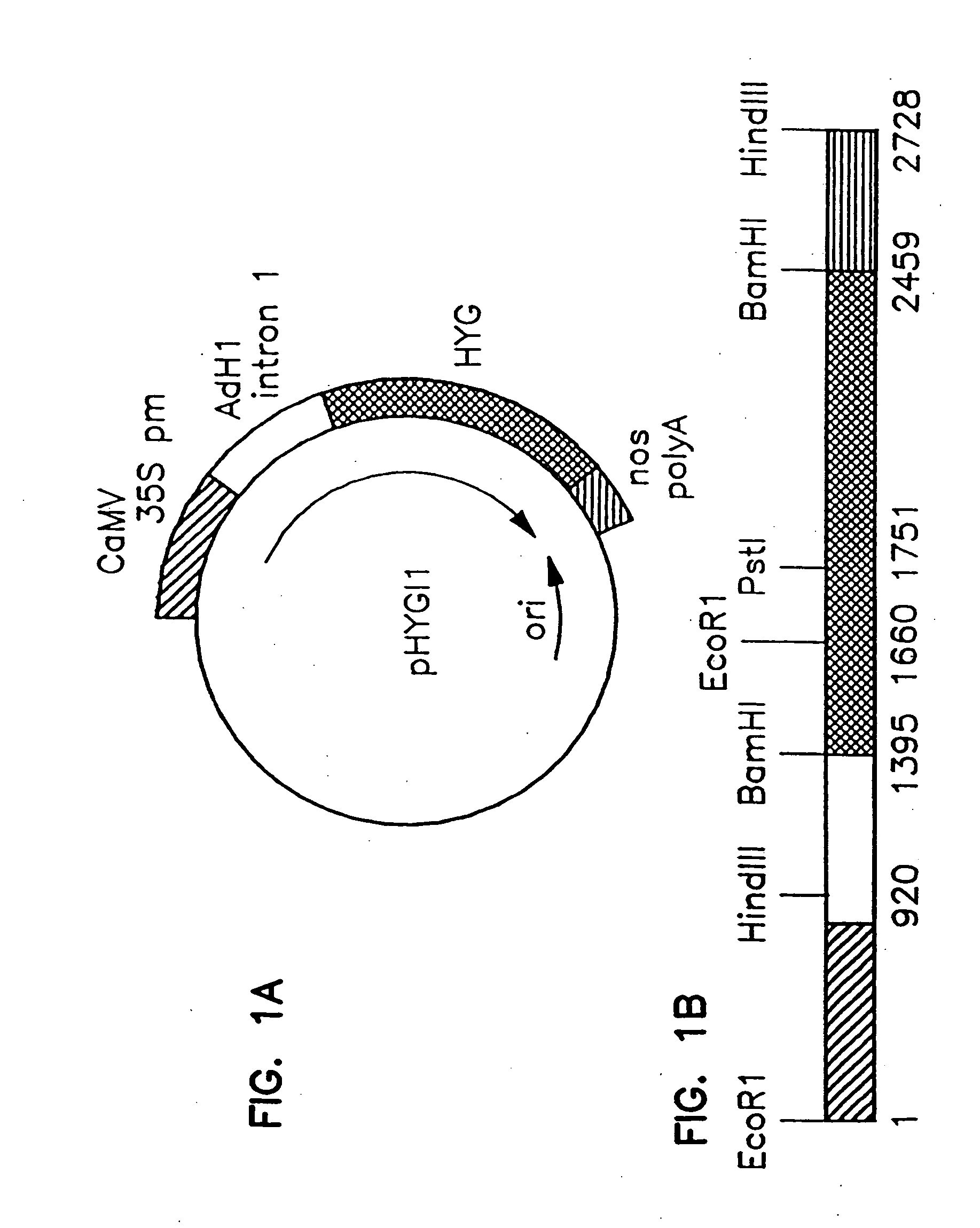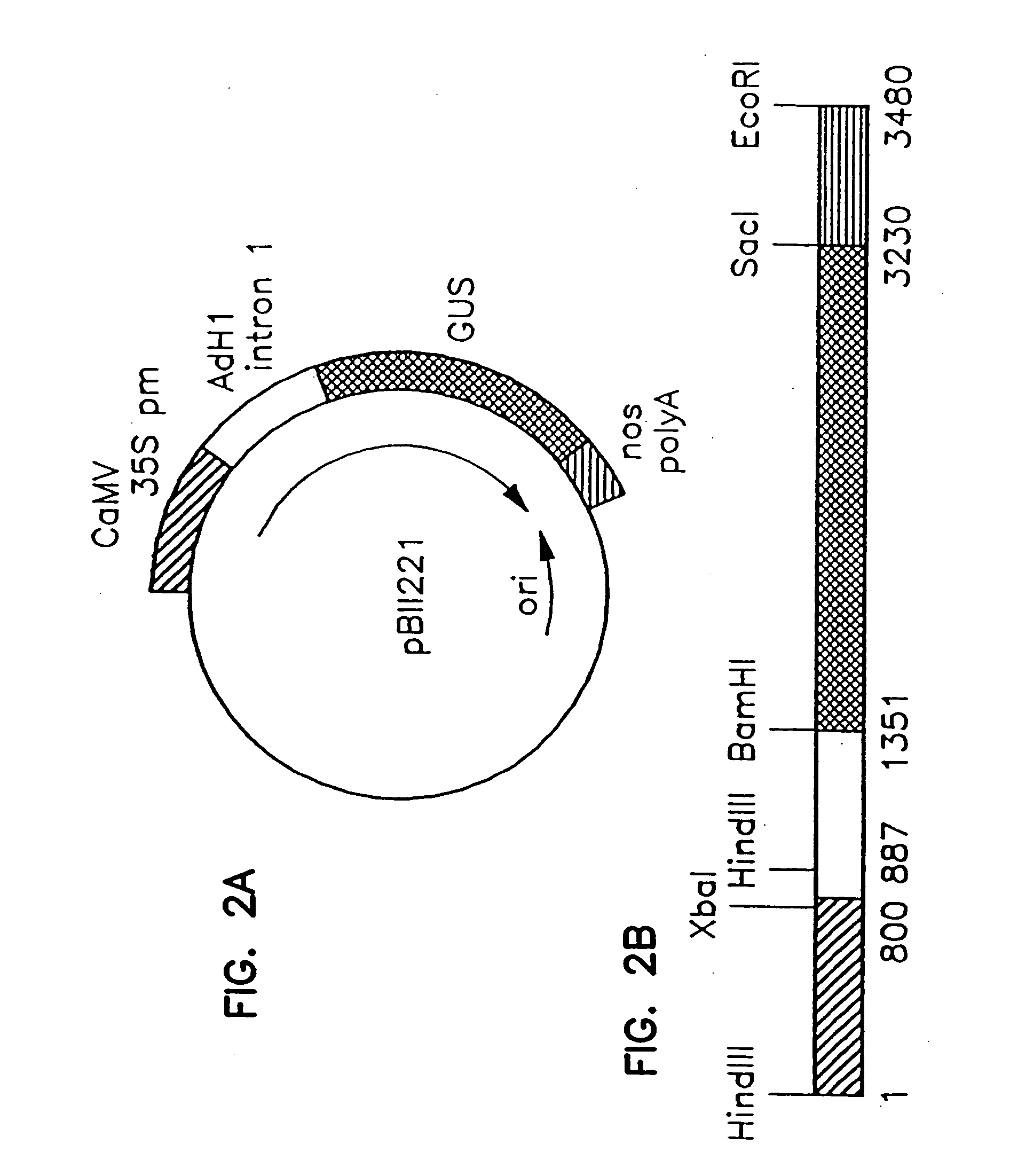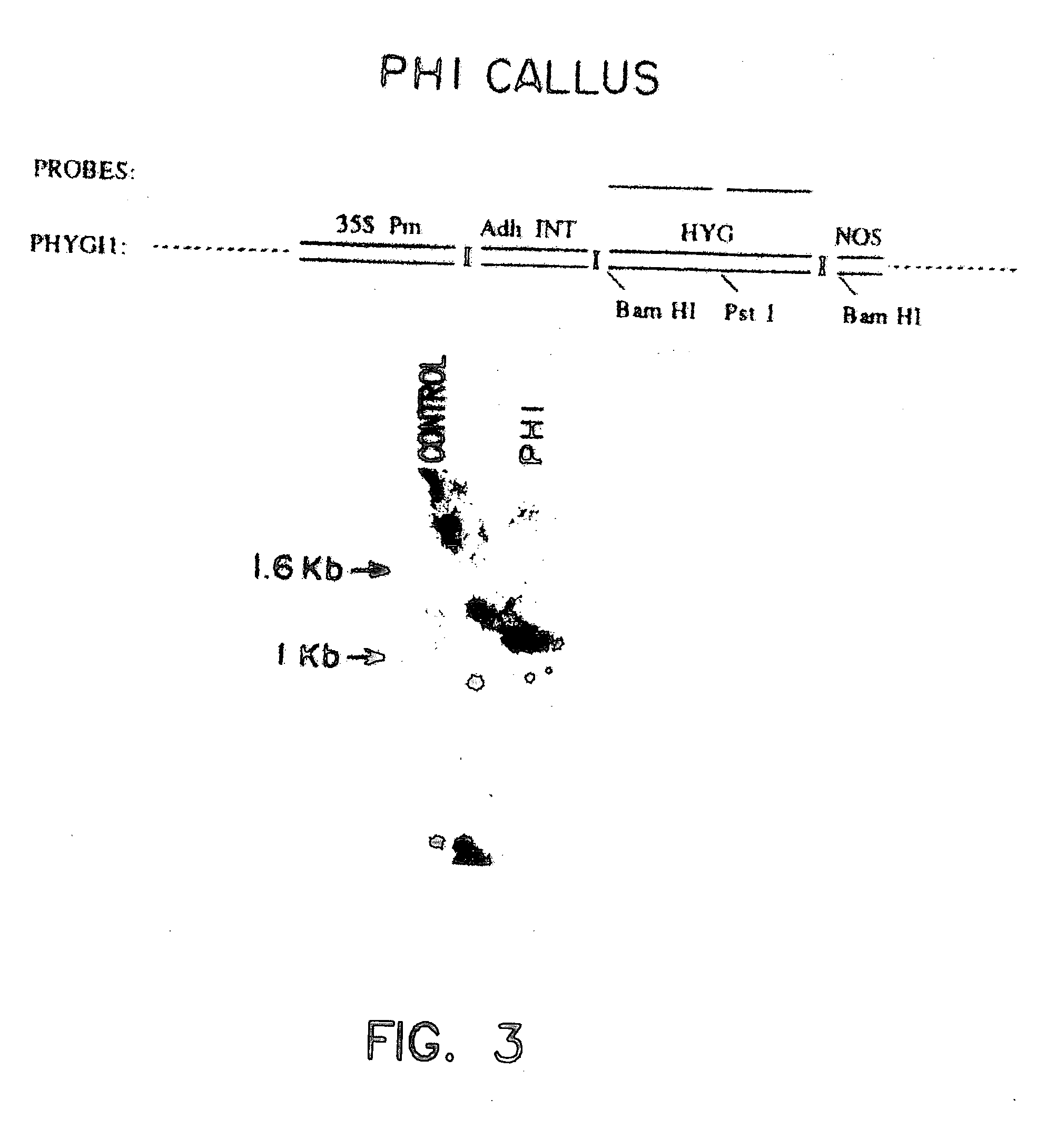Fertile transgenic corn plants
a technology of transgenic corn and corn, which is applied in the field of fertilizer-transgenic corn plants, can solve the problems of inability to produce stably transformed i>zea, no technology has been developed which would permit the production of stably transformed zea, and no molecular data confirming the introduction of exogenous dna into corn cells, etc., and achieves the effect of increasing the whole kernel level of certain amino acids
- Summary
- Abstract
- Description
- Claims
- Application Information
AI Technical Summary
Benefits of technology
Problems solved by technology
Method used
Image
Examples
example i
Fertile Transgenic Zea Mays Plants from Callus Line AB11
I. Initiation and Maintenance of Maize Cell Cultures which Retain Plant Regeneration Capacity
[0118] Friable, embryogenic maize callus cultures were initiated from hybrid immature embryos produced by pollination of inbred line A188 plants (University of Minnesota, Crop Improvement Association) with pollen of inbred line B73 plants (Iowa State University). Ears were harvested when the embryos had reached a length of 1.5 to 2.0 mm. Each ear was surface sterilized in 50% v / v commercial bleach (2.63% w / v sodium hypochlorite) for 20 min. at room temperature. The ears were then washed with sterile, distilled, deionized water. Immature embryos were aseptically isolated and placed on nutrient initiation / -maintenance medium with the root / shoot axis exposed to the medium. Initiation / maintenance medium (hereinafter referred to as “F medium”) consisted of N6 basal media (Chu 1975) with 2% (w / v) sucrose, 1.5 mg per liter 2,4-dichloropheno...
example ii
[0152] Fertile Transgenic Plants from Callus Line AB63S Containing Recombinant DNA Encoding a Seed Storage Protein
[0153] The 10 kD-zein storage protein is produced in the endosperm of the maize kernel and is a representative member of a class of proteins referred to as “seed storage proteins.” The protein contains extremely high levels of methionine (22.5%) and is encoded by the Zps10 / (22) gene (M. S. Benner et al., Theor. Appl. Genet., 78, 761 (1989)); a gene referred to as z10 herein. Thus, increased expression of the z10 gene can be used to increase the methionine content of corn. Production of fertile transgenic corn containing a chimeric z10 gene was accomplished by the procedures of Example I with some minor modifications. Example II also demonstrates the introduction of recombinant DNA using a callus line different from that used in Example I.
I. Tissue Culture Lines
[0154] The embryogenic maize callus line named AB63S used in this example was produced from immature embryos...
example iii
Fertile Transgenic Plants from Callus Line AB12 Containing Recombinant DNA Encoding an Insecticidal Protein
[0185] The proteins encoded by the various Bacillus thuringiensis genes have been shown to be useful in a number of pesticidal applications. Production of trans-genic maize plants with specific heterologous Bt genes may improve the resistance of the plants to specific pests. Fertile transgenic plants containing a recombinant Bt gene were prepared according to the procedure of Example I, with several minor modifications, as indicated below.
[0186] At the same time AB11, the callus line of Example I, was initiated, another callus line was also prepared. AB12 was prepared from a separate cross of plants with the same parental genotype (A188×B73). This example demonstrates the regeneration of fertile transgenic plants from a third callus line in addition to AB11 and AB63S, and demonstrates that the production of fertile transgenic plants was not the result of properties unique to ...
PUM
 Login to View More
Login to View More Abstract
Description
Claims
Application Information
 Login to View More
Login to View More - R&D
- Intellectual Property
- Life Sciences
- Materials
- Tech Scout
- Unparalleled Data Quality
- Higher Quality Content
- 60% Fewer Hallucinations
Browse by: Latest US Patents, China's latest patents, Technical Efficacy Thesaurus, Application Domain, Technology Topic, Popular Technical Reports.
© 2025 PatSnap. All rights reserved.Legal|Privacy policy|Modern Slavery Act Transparency Statement|Sitemap|About US| Contact US: help@patsnap.com



